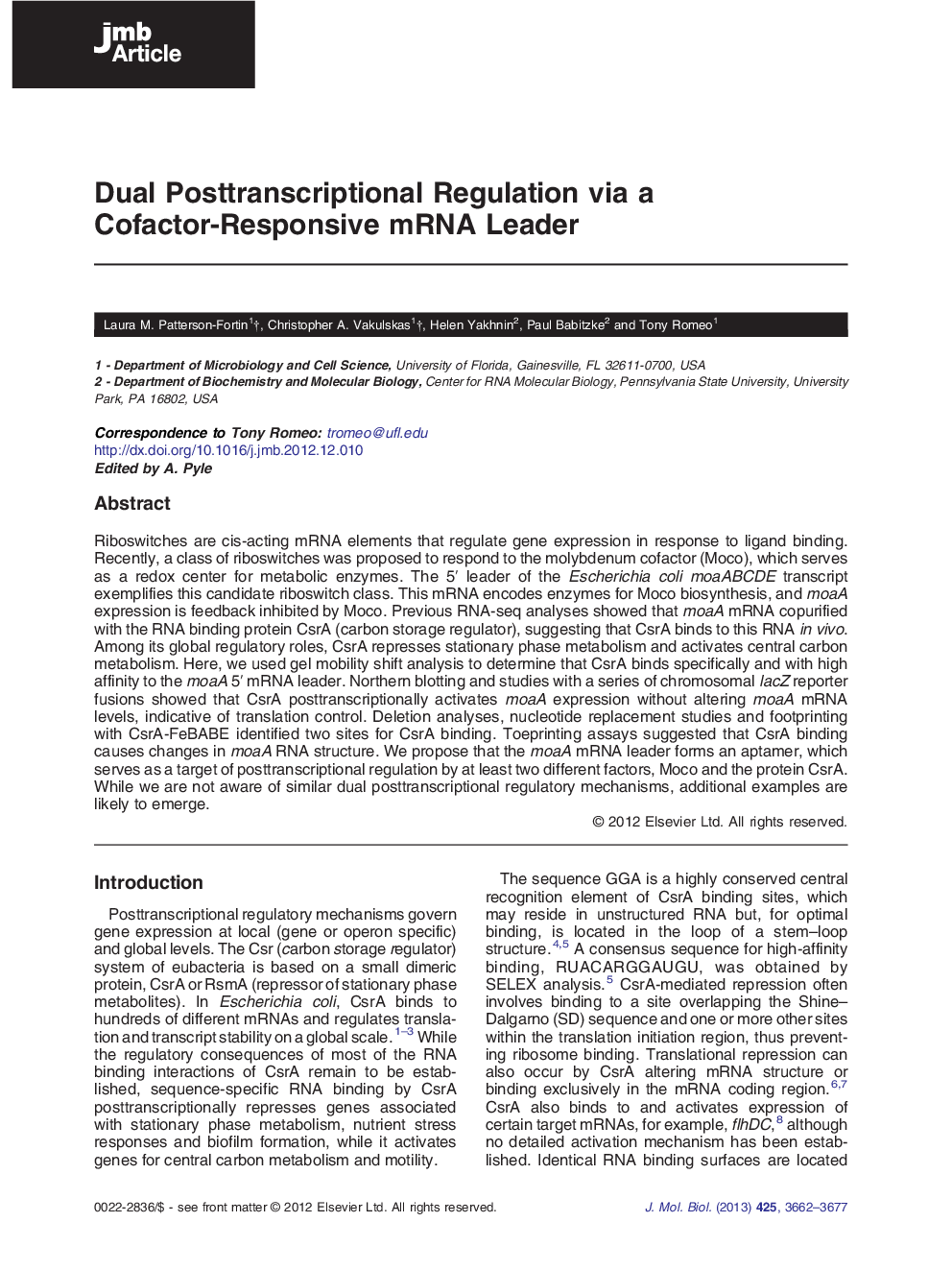| Article ID | Journal | Published Year | Pages | File Type |
|---|---|---|---|---|
| 2184571 | Journal of Molecular Biology | 2013 | 16 Pages |
Riboswitches are cis-acting mRNA elements that regulate gene expression in response to ligand binding. Recently, a class of riboswitches was proposed to respond to the molybdenum cofactor (Moco), which serves as a redox center for metabolic enzymes. The 5′ leader of the Escherichia coli moaABCDE transcript exemplifies this candidate riboswitch class. This mRNA encodes enzymes for Moco biosynthesis, and moaA expression is feedback inhibited by Moco. Previous RNA-seq analyses showed that moaA mRNA copurified with the RNA binding protein CsrA (carbon storage regulator), suggesting that CsrA binds to this RNA in vivo. Among its global regulatory roles, CsrA represses stationary phase metabolism and activates central carbon metabolism. Here, we used gel mobility shift analysis to determine that CsrA binds specifically and with high affinity to the moaA 5′ mRNA leader. Northern blotting and studies with a series of chromosomal lacZ reporter fusions showed that CsrA posttranscriptionally activates moaA expression without altering moaA mRNA levels, indicative of translation control. Deletion analyses, nucleotide replacement studies and footprinting with CsrA-FeBABE identified two sites for CsrA binding. Toeprinting assays suggested that CsrA binding causes changes in moaA RNA structure. We propose that the moaA mRNA leader forms an aptamer, which serves as a target of posttranscriptional regulation by at least two different factors, Moco and the protein CsrA. While we are not aware of similar dual posttranscriptional regulatory mechanisms, additional examples are likely to emerge.
Graphical AbstractFigure optionsDownload full-size imageDownload high-quality image (189 K)Download as PowerPoint slideHighlights► moaA mRNA appears to form a riboswitch, regulated by molybdenum cofactor (Moco). ► The regulatory protein CsrA binds to the moaA mRNA leader and alters it structure. ► CsrA postranscriptionally activates moaA expression without affecting its mRNA level. ► We propose that moaA mRNA is a target for dual regulation by CsrA and Moco.
